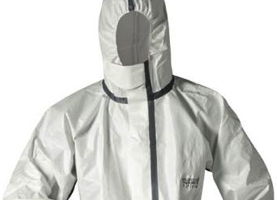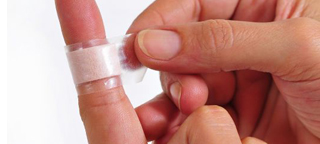Protective Clothing
Workers, visitors and subcontractors must be equipped with complete sets of appropriate protective clothing whenever they are in a situation that might cause harm to their health and safety. (AF 3.5)
Examples of protective clothing include the following items:
- Rubber boots
- Boots with steel bars
- Rubber gloves
- Face masks
- Respiratory equipment (including replacement filters)
- Ear protection devices
- Protective goggles
- Life jackets
- Overalls

Inspectors must check that all protective clothing is in a good condition and used according to the label instructions. When protective clothing is a legal requirement or a requirement authorized by a competent authority, inspectors must verify that all the legal requirements are met. (AF 3.5.1)
In many cases, protective clothing may be reused. The label instructions normally contain information on reusability as well as on how to wash and store them. Protective clothing and equipment must never be washed or cleaned together with private clothing, and re-usable gloves must be washed before removal.
All items that are designed for single use only must be disposed of after one use. Dirty, damaged, depleted or expired protective clothing or equipment (e.g. old filter cartridges) must be disposed of appropriately.

Protective clothing and equipment shall never be stored inside the plant protection product storage facility and shall be kept completely separate from any other chemicals that might cause contamination of the clothing or equipment. In the same way, protective clothing must not contaminate any of the products. (AF 3.5.2)
This is not a suitable practice, as the producer does not have any control over the conditions under which the protective clothing is cleaned and cannot verify whether it is always washed separately from private clothing. This is indeed a risk as some households have babies and children.
No protective clothing is allowed to be stored inside the PPP, not even at the entrance.
No protective clothing is allowed to be stored inside the PPP store.
Workers applying PPPs must always be equipped with suitable protective clothing (e.g. overalls, raincoats, masks, gloves, etc.) as required by the label and by law. It is not good practice to spray PPPs when the wind is blowing because of the risk of drift to areas where no PPP application is needed.









